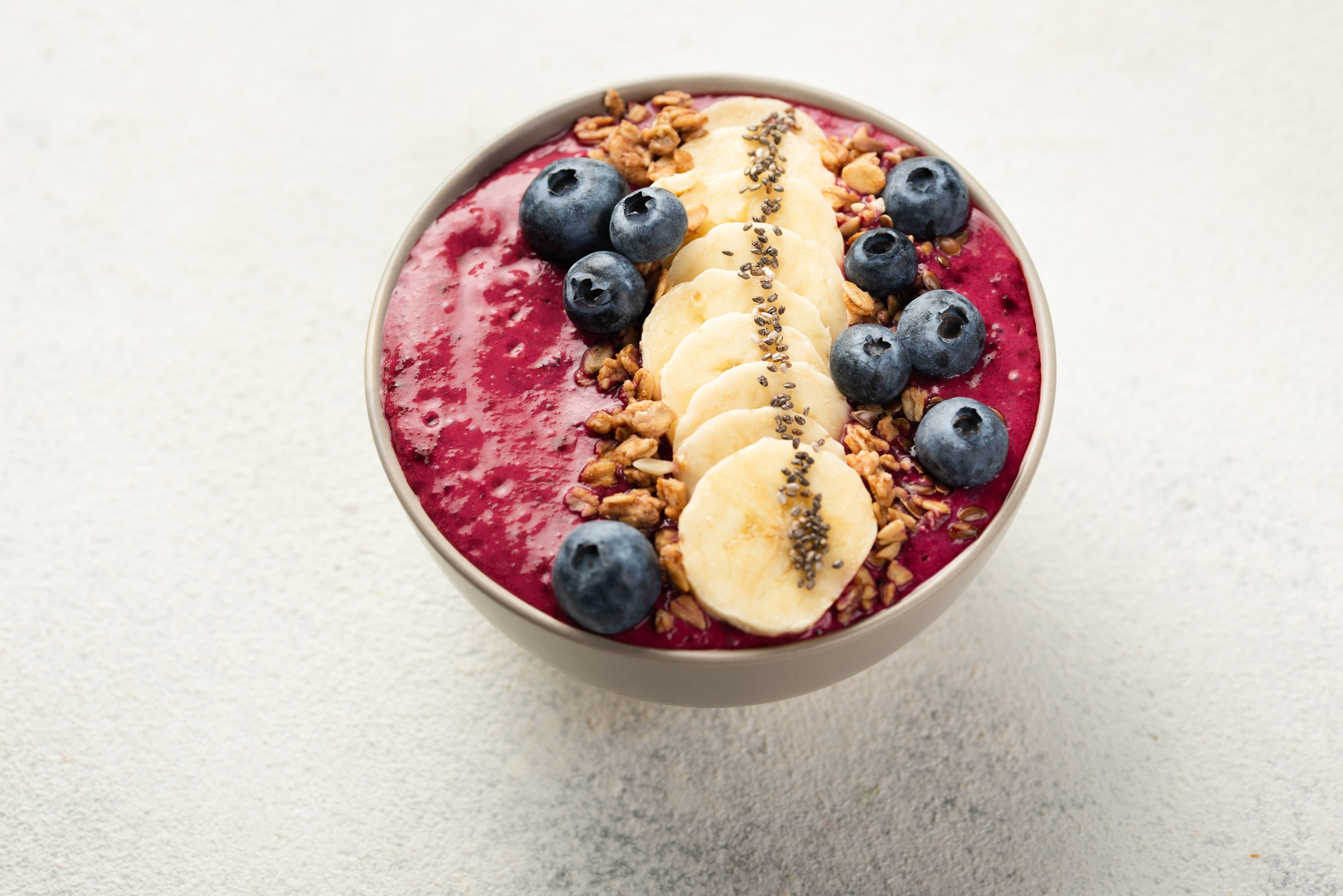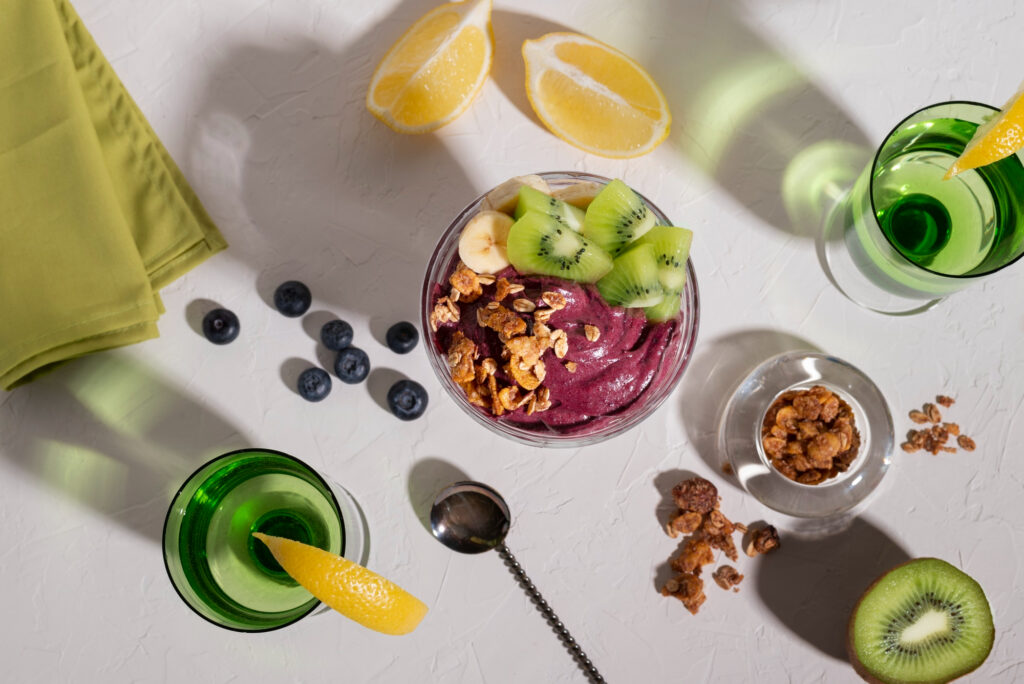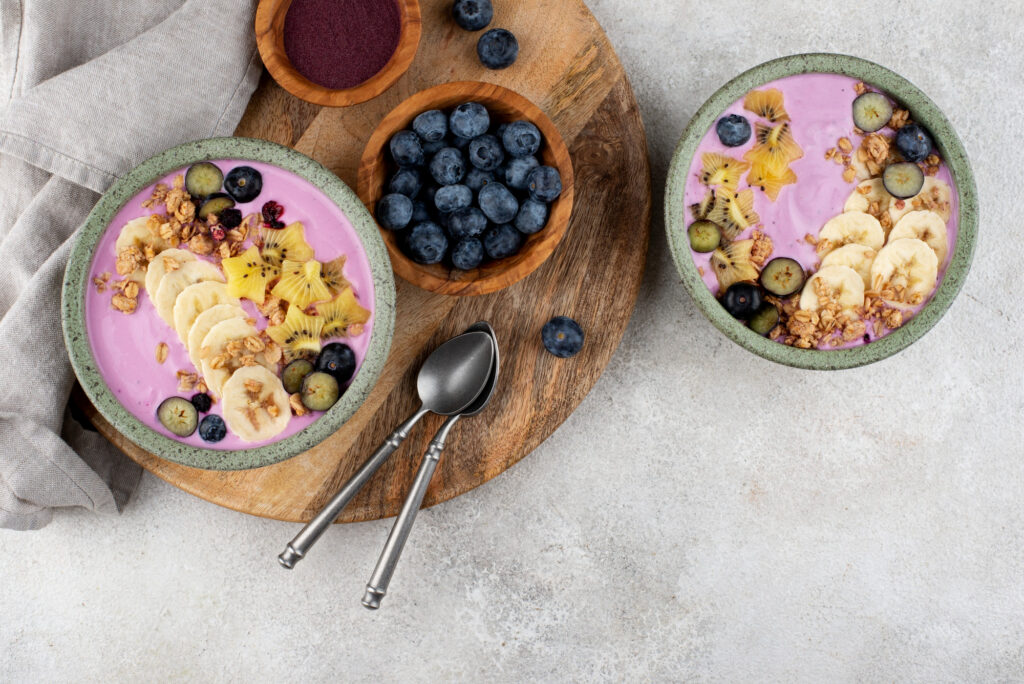
Healthy Food Innovation: The Brussels food landscape is undergoing an unprecedented transformation – Between new technologies and revolutionary approaches, healthy food innovation is redefining how we eat. Discover how innovative players in the Belgian capital are shaping the future of our food, what trends are emerging in 2025, and why Brussels is establishing itself as a European hub for healthy food innovation and food tech.

The healthy food innovation market in Brussels has experienced an average annual growth of 18% since 2022, reaching an estimated value of 423 million euros in 2025. This explosive expansion can be explained by the convergence of several trends in the field of healthy food innovation:
The Brussels Food Research Institute (IBRA) recently published a study on healthy food innovation revealing that 72% of the capital's residents consume products resulting from this innovation at least three times a week, compared to only 38% in 2020. Find in our last article the relation between healthy foods and works.
The innovative healthy food ecosystem in Brussels revolves around three main types of players:
Companies like NutriTech, FoodSync, and LA ÇAÍ are breaking established codes by offering radically new approaches to healthy eating. LA ÇAÍ, for example, has revolutionized the superfoods market by developing a patented process that preserves the nutritional properties of açaí while improving its preservation.
Brussels now has four incubators dedicated to food innovation: Food Hub, NutriStart, Gastro Innovate, and Smart Food Accelerator. These structures have supported more than 60 food tech startups since 2022, helping to make Brussels a European center of excellence.
Brussels universities have developed close partnerships with industry, as evidenced by the "Future Food Lab" consortium that brings together researchers, industrialists, and entrepreneurs around food innovation projects.
To understand the scale of the ongoing transformation, some statistics are particularly revealing:
These figures demonstrate an exceptional dynamic that places Brussels among the most innovative European cities in the field of healthy food innovation.

Artificial intelligence is undoubtedly the technology that is most radically transforming the healthy food innovation sector in Brussels. Its applications are multiple and touch all aspects of the food experience in this field of innovation:
Startups like NutriScan use AI to analyze individual biological profiles and recommend tailored diets. Their application, which already has more than 45,000 Brussels users, incorporates learning algorithms that refine recommendations based on measured physiological reactions.
"Our technology goes well beyond simple generic recommendations," explains Sofia Vermeulen, founder of NutriScan. "We use AI to understand how each organism specifically reacts to different nutrients and adapt recommendations in real time."
AI also enables recipe optimization based on multiple parameters: nutritional value, taste, texture, cost, and environmental impact. Chef Alexander Dhont, a pioneer of algorithmic cuisine in Brussels, collaborates with data scientists to create dishes whose composition is optimized by artificial intelligence.
"Our algorithms analyze thousands of ingredient combinations to identify those that maximize both nutritional benefits and taste experience," he specifies.
Connected objects are also transforming our kitchens and eating habits:
Connected refrigerators, now present in 12% of affluent Brussels households, not only allow tracking of expiration dates and suggesting recipes adapted to available ingredients but also automatically ordering missing products. Some models even integrate nutritional scanners that analyze the composition of foods.
Companies like SmartCook are developing connected utensils that optimize food preparation to preserve nutritional value. Their connected pan, for example, automatically adjusts temperature according to ingredients to minimize nutrient loss.
Blockchain, a distributed ledger technology, brings unprecedented transparency to the food supply chain:
Brussels startup FoodChain has developed a platform that allows tracking each ingredient from its source to the consumer's plate. By scanning a simple QR code, customers can visualize the entire journey of their food, thus guaranteeing its authenticity and quality.
For premium products like açaí, blockchain enables certification of origin and production methods. LA ÇAÍ uses this technology to guarantee its customers that its superfoods come from producers respecting sustainable practices in the Amazon.
Intelligent ordering systems are transforming the customer experience in healthy food establishments:
Algorithms analyze consumption habits to anticipate orders and reduce waiting times. Some establishments, like GreenEat in Brussels, can prepare regular customers' usual orders even before they enter the restaurant.
Digital screens and menus adapt based on multiple parameters: time of day, weather, customer nutritional profile, availability of fresh ingredients, etc.
These disruptive technologies are not just gadgets – they are profoundly transforming our relationship with healthy food by making it more accessible, personalized, and transparent.

Beyond technologies, healthy food innovation is also manifested in new ways of interacting with consumers. The customer experience in the healthy food innovation sector is now completely redesigned to be more immersive, personalized, and engaging.
The major trend of 2025 is undoubtedly the hyper-personalization of food offerings:
Companies like LA ÇAÍ now offer biological analyses to create detailed nutritional profiles. This data then allows composing menus perfectly adapted to each client's specific needs, taking into account their deficiencies, allergies, health goals, and taste preferences.
"We're no longer simply talking about generic 'healthy food,' but about precisely calibrated nutrition for each individual," explains Mathilde Leroux, nutritionist and consultant for several Brussels restaurants. "It's a revolution comparable to that of personalized medicine."
Some establishments go even further by directly involving their customers in the creation process. LA ÇAÍ's "Create Your Bowl" concept allows consumers to participate in workshops where they design their own açaí bowl recipes, with the most popular ones being integrated into the permanent menu.
Digital is now fully integrated into the consumption experience:
Platforms like "BrusselsEats" connect healthy food enthusiasts who share similar preferences. These applications not only allow discovering new establishments but also organizing shared meals and creating a true community around healthy eating.
To make healthy eating more fun and engaging, several Brussels concepts have integrated gamification elements. The "NutriPlay" chain, for example, has developed a system of points and nutritional challenges that customers can take on to earn rewards.
Augmented reality (AR) considerably enriches the consumption experience:
The "NutriLens" application, developed in Brussels, allows scanning any dish to instantly visualize its nutritional composition in augmented reality. Colorful graphics appear above the plate, detailing macronutrients, micronutrients, and calories.
AR is also used to tell the story of food. At LA ÇAÍ, customers can scan their açaí bowls to see videos showing the berry harvest in the Amazon, thus creating an emotional connection with the origin of their food.
"Augmented reality transforms a simple meal into a complete educational and emotional experience," observes Jules Vandenbempt, user experience specialist. "It creates a much deeper food awareness."
New payment methods eliminate friction in the customer journey:
Contactless payment is now the norm in 97% of Brussels healthy food establishments, but some go further with facial recognition or fingerprint systems.
The subscription model, already popular in other sectors, is gaining ground in healthy food. Chains like FreshDaily offer monthly packages giving access to a defined number of meals, thus simplifying the purchasing decision and building customer loyalty.
These innovations in customer experience have a significant impact on healthy food consumption in Brussels. A BruFood Insights study reveals that establishments implementing these new experiences have seen their clientele increase by 32% on average and their retention rate improve by 47%.

Healthy food innovation is not limited to improving our health – it also aims to preserve that of our planet. In 2025, sustainability and healthy food innovation are now inseparable in the minds of Brussels consumers.
Drastic waste reduction has become an absolute priority:
The concept of "nose-to-tail" for meat or "root-to-stem" for vegetables is now the norm in innovative Brussels kitchens. These approaches aim to use 100% of ingredients, transforming what was previously considered waste into valued elements.
The "Full Circle" restaurant has taken this concept to the extreme by developing a menu where absolutely nothing is thrown away. Vegetable peels become crispy chips, stems are fermented, and even cooking water is reused in sauces.
The major innovation of 2025 is undoubtedly the rise of edible packaging. Brussels startup "EatWrap" has developed food films based on algae and plant proteins that not only protect food but can be consumed with it, even adding additional nutrients.
"Our packaging doesn't just stop at being biodegradable – it's nutritious," explains Thomas Verhaegen, founder of EatWrap. "It contains vitamins and minerals that complement the nutritional profile of the foods it protects."
Locavorism is experiencing a new youth thanks to technological innovations:
Brussels now has 17 vertical farms producing vegetables, fruits, and aromatic herbs in the heart of the city. These high-tech structures use 95% less water than conventional agriculture while eliminating pesticides and drastically reducing transport distances.
The largest of these, UrbanHarvest, located in a former warehouse in Molenbeek, produces more than 40 tons of vegetables per year and directly supplies 28 restaurants specializing in healthy food, including LA ÇAÍ.
Applications like "FarmConnect" directly connect small local producers with restaurants and consumers. Thanks to an AI-optimized logistics system, deliveries are pooled, thus reducing the carbon footprint while guaranteeing product freshness.
Innovation in packaging goes beyond simple waste reduction:
Packaging equipped with colored indicators changes hue according to the actual freshness of the product, replacing fixed expiration dates that often lead to waste. This technology developed by SmarPack reduces food waste by 62% according to their studies.
Beyond biodegradable materials, the new generation of packaging is regenerative: after use, they can be planted to transform into plants. GrowPack has created containers based on seeds and compressed compost which, once used, can be placed in soil to give birth to aromatic herbs.
The concept of circular economy is profoundly transforming the healthy food industry:
The return of the deposit system is accompanied by significant innovations. The "BrusselsReturns" initiative has deployed a network of standardized containers used by more than 70 restaurants and businesses in the capital. Customers can drop off their empty containers at any point in the network, where they are collected, industrially cleaned, and put back into circulation.
The valorization of food by-products reaches heights of creativity. The "SecondLife" brewery produces craft beers from unsold bread, while "PulpSnack" transforms the residual pulp from pressed juices into delicious dehydrated snacks.
These sustainable innovations are not only beneficial for the environment – they also represent a major competitive advantage. A Brussels Food Observatory survey reveals that 83% of Brussels consumers say they are willing to pay up to 15% more for healthy food products engaged in a sustainable and transparent approach.
If 2025 has already seen the emergence of many revolutionary innovations, next year promises to be even more disruptive for healthy food innovation. Here's a glimpse of the trends that should shape the healthy food innovation landscape in Brussels in the coming months.
Several technological advances are about to radically transform the sector:
Already used experimentally, 3D food printing should see significant commercial deployment in 2026. Brussels startup "PrintEat" plans to launch the first home food printing service, allowing consumers to create dishes perfectly adapted to their specific nutritional needs.
"Our technology allows printing meals whose nutritional composition is adjusted to the milligram," reveals Emma De Smet, CEO of PrintEat. "It's the next logical step in food personalization."
While lab-grown meat is already making headlines, 2026 should see the emergence of other categories of cell-cultured foods. The "CellHarvest" laboratory is currently working on cultivated seafood and dairy products, promising a 95% reduced environmental footprint compared to traditional methods.
Consumer behaviors continue to evolve rapidly:
Beyond simple social networks, true structured food communities are emerging in Brussels. These groups share not only food preferences but also values and a lifestyle. The concept of "tribal eating" should amplify, with establishments and brands specifically targeting these communities.
"We are witnessing the formation of true food tribes that go beyond simple diets," analyzes Professor Van Heulen from the Free University of Brussels. "These groups share a worldview that is expressed through their food."
While functional foods have existed for a long time, their sophistication is reaching new heights. The next generation of functional foods will be designed to target very specific biological functions: cognitive improvement, targeted immune strengthening, gut microbiome optimization, etc.
LA ÇAÍ plans to launch a range of functional açaí bowls in early 2026, each formulated to meet a specific need: sports recovery, intellectual concentration, immune strengthening, etc.
Despite the enthusiasm generated by these innovations, several challenges will need to be addressed:
One of the main risks is seeing healthy food innovation create a two-tier food system, with premium innovative products reserved for the wealthier. Several initiatives aim to democratize access to these healthy food innovations, such as the "Healthy For All" program that subsidizes access to advanced food technologies for disadvantaged populations.
The rapid evolution of food technologies raises complex ethical questions that regulations struggle to keep up with. A think tank called "FoodEthics Brussels" has been created to develop recommendations that would frame these innovations without hindering their development.
Industry specialists agree on several major trends:
At the intersection of neuroscience and gastronomy, this emerging discipline aims to understand how the brain perceives flavors to create optimized taste experiences. Several Brussels restaurants are already experimenting with techniques based on these principles.
Advances in nutritional genetics will allow even finer personalization of micronutrient intakes. Instant salivary tests could soon allow adjusting the composition of dishes according to the immediate needs of the organism.
"We are on the threshold of an era where every bite will be optimized for your unique biology," predicts Dr. Janssens, a researcher in personalized nutrition. "It's a revolution comparable to that of precision medicine."
Healthy food innovation in Brussels represents much more than a simple trend – it's a profound transformation that redefines our relationship with food. At the confluence of multiple disruptive technologies, new experiential approaches, and increased environmental awareness, the Belgian capital is positioning itself as a true laboratory for future healthy food innovation.
This creative effervescence brings considerable benefits: healthier and more personalized nutrition for consumers, new business opportunities for entrepreneurs, and sustainable solutions for our planet. The innovations emerging today in Brussels outline the contours of what global food will be in the years to come.
For industry players like LA ÇAÍ, the challenge now is to maintain the delicate balance between technological innovation and authenticity, between extreme personalization and accessibility, between disruption and tradition. It is in this creative tension that the true revolution of healthy food lies.
💬 And what about you? Which healthy food innovation seems most promising for the future of food in Brussels? Share your vision in the comments or come exchange directly with our healthy food innovation experts at LA ÇAÍ!
This article on healthy food innovation was written in collaboration with the Brussels Food Innovation Lab and is based on data collected from more than 200 actors in the Brussels healthy food innovation ecosystem.